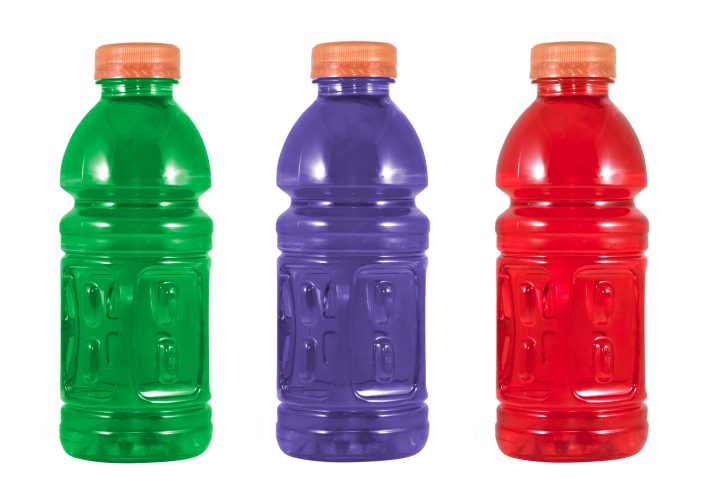Marathon Quest: Hydration for long-distance races
Elite marathoner Andrew Smith discusses the importance of proper hydration for the half-marathon and marathon.
 Whether you are training for the half-marathon or the marathon, hydration is an important aspect of your preparation, as well as your success on race day. Research shows that even as little as a 2 per cent drop in body weight due to sweat loss can have a negative effect on performance. For a 150-pound person, this equates to losing three pounds. In warmer weather, you can lose a couple of pounds of fluid very quickly if you are not hydrating properly.
Whether you are training for the half-marathon or the marathon, hydration is an important aspect of your preparation, as well as your success on race day. Research shows that even as little as a 2 per cent drop in body weight due to sweat loss can have a negative effect on performance. For a 150-pound person, this equates to losing three pounds. In warmer weather, you can lose a couple of pounds of fluid very quickly if you are not hydrating properly.
Fortunately, with your race being on Oct. 16, it’s highly unlikely that you will have to worry about high temperatures or humidity. However, even in perfect racing conditions, you still need to consume an adequate amount of fluids and calories to keep you feeling strong throughout your race. Here are a few of the major benefits you will gain from having a proper race-day fuelling plan:
1) Energy Source – consuming a sports drink and/or gels throughout your race will provide you with an immediate energy source during the race. By consistently consuming calories, you are topping up your energy, and therefore you will not have to tap into your stored carbohydrates (glycogen) until the latter stages of the race, which is when you will need it most. This will help you to avoid the always dreaded “bonk” in the marathon.
2) Avoid Cramping – consumption of the proper electrolytes will help prevent cramping and dehydration in the latter stages of the race. Even in cooler conditions you will be sweating out a lot more than you think. The main electrolytes to look for are sodium and potassium, which are found in most sports drinks. However, you may want to try a drink like E-Load which also has magnesium and calcium, which will help with proper muscle contraction and may help avoid muscle cramping/spasming.
5 Key factors in planning your hydration and fuelling plan:
1) Find a carbohydrate (electrolyte) drink that you like. Everyone has different levels of tolerance with respect to which drinks will sit well on your stomach. I suggest experimenting with a couple of different sports drinks until you find one that works for you. Personally, I have used a number of different drinks over the years, and I really like Eload for its high electrolyte content, as well as its mild taste and light feeling on the stomach.
2) Gels are another great option to use, especially if you are not particularly fond of a particular carbohydrate drink. Gels provide similar amounts of calories, carbohydrates, and electrolytes as most sports drinks, however, you must consume enough water with the gel in order for your body to absorb the contents properly. One option is to premix the gel in a bottle with the recommended amount of water (usually 200-250 mL for most gels). Shake the bottle up well to be sure that the gel mixes in properly and none is stuck on the bottom of the bottle. If you have a fuel belt, you can have your pre-made gel solution on your belt for whenever you would like it. On race day, you have the option of going with the pre-made solution, or if you do not like feeling weighed down with extra bottles attached to you, just consume your gel packet as you are nearing a water station, and then grab a cup or two of water to wash it down.
3) Know how frequently the water/gatorade stations will be placed on race day. This is where it’s important to do your homework, so you know exactly what to expect on race day. Fortunately, the Toronto Waterfront course for both the half and marathon have aid stations approximately every 3K. This is a great advantage to you to have so many stations on the course, but you still want to have a plan with respect to which points in the race you want to take your gels, or which points you may want a certain drink.
4) Testing your limits in training will pay dividends on race day: I like to challenge myself during a couple of my training long runs to see how much fluid I can consume and still feel comfortable. By establishing a routine during training, you will know exactly what works for you and this will avoid any guessing games during the race.
5) Drink early/drink often: I’m sure most people have heard this phrase before, but if you haven’t, it simply means that you should start consuming fluids early in the race, and continue consuming fluids as often as you are able to. Many people say they don’t feel thirsty in the early stages of a race, especially on a cooler day. The problem is that if we waited until the point that we actually felt thirsty, we may have already lost a significant amount of sweat and could already be quite dehydrated. However, there have been recent studies that indicate the top runners in a marathon are often the most dehydrated. And new evidence is emerging that suggests we should listen to our body’s signals, only drinking when thirsty. The lesson here, try a few different options during your training and tune-up races to find out what works best for you.
Andrew Smith has a marathon PB of 2:16:14 and runs for Athletics Toronto.


